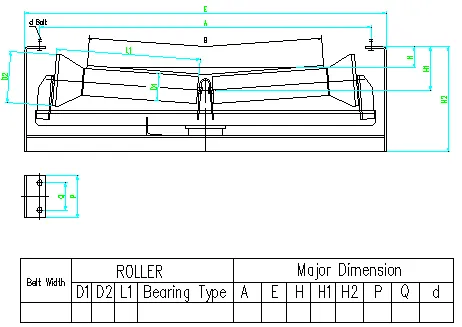 Afrikaans
Afrikaans  Albanian
Albanian  Amharic
Amharic  Arabic
Arabic  Armenian
Armenian  Azerbaijani
Azerbaijani  Basque
Basque  Belarusian
Belarusian  Bengali
Bengali  Bosnian
Bosnian  Bulgarian
Bulgarian  Catalan
Catalan  Cebuano
Cebuano  Corsican
Corsican  Croatian
Croatian  Czech
Czech  Danish
Danish  Dutch
Dutch  English
English  Esperanto
Esperanto  Estonian
Estonian  Finnish
Finnish  French
French  Frisian
Frisian  Galician
Galician  Georgian
Georgian  German
German  Greek
Greek  Gujarati
Gujarati  Haitian Creole
Haitian Creole  hausa
hausa  hawaiian
hawaiian  Hebrew
Hebrew  Hindi
Hindi  Miao
Miao  Hungarian
Hungarian  Icelandic
Icelandic  igbo
igbo  Indonesian
Indonesian  irish
irish  Italian
Italian  Japanese
Japanese  Javanese
Javanese  Kannada
Kannada  kazakh
kazakh  Khmer
Khmer  Rwandese
Rwandese  Korean
Korean  Kurdish
Kurdish  Kyrgyz
Kyrgyz  Lao
Lao  Latin
Latin  Latvian
Latvian  Lithuanian
Lithuanian  Luxembourgish
Luxembourgish  Macedonian
Macedonian  Malgashi
Malgashi  Malay
Malay  Malayalam
Malayalam  Maltese
Maltese  Maori
Maori  Marathi
Marathi  Mongolian
Mongolian  Myanmar
Myanmar  Nepali
Nepali  Norwegian
Norwegian  Norwegian
Norwegian  Occitan
Occitan  Pashto
Pashto  Persian
Persian  Polish
Polish  Portuguese
Portuguese  Punjabi
Punjabi  Romanian
Romanian  Russian
Russian  Samoan
Samoan  Scottish Gaelic
Scottish Gaelic  Serbian
Serbian  Sesotho
Sesotho  Shona
Shona  Sindhi
Sindhi  Sinhala
Sinhala  Slovak
Slovak  Slovenian
Slovenian  Somali
Somali  Spanish
Spanish  Sundanese
Sundanese  Swahili
Swahili  Swedish
Swedish  Tagalog
Tagalog  Tajik
Tajik  Tamil
Tamil  Tatar
Tatar  Telugu
Telugu  Thai
Thai  Turkish
Turkish  Turkmen
Turkmen  Ukrainian
Ukrainian  Urdu
Urdu  Uighur
Uighur  Uzbek
Uzbek  Vietnamese
Vietnamese  Welsh
Welsh  Bantu
Bantu  Yiddish
Yiddish  Yoruba
Yoruba  Zulu
Zulu Understanding Drive Belts and Pulleys for Efficient Machine Operation
Understanding Drive Belts and Pulleys Essential Components of Mechanical Systems
Drive belts and pulleys are fundamental components in various mechanical systems, playing a crucial role in the transfer of motion and power between different parts of machinery. These components are ubiquitous in applications ranging from automotive engines to industrial machinery and home appliances.
Understanding Drive Belts and Pulleys Essential Components of Mechanical Systems
There are several types of drive belts, each designed for specific applications. The most common types include flat belts, V-belts, and timing belts. Flat belts, characterized by their rectangular cross-section, are typically used in applications requiring long distances between pulleys. V-belts, recognized by their trapezoidal cross-section, offer enhanced grip and are commonly found in automotive engines and various industrial equipment. Timing belts, with their toothed design, ensure precise synchronization of rotating shafts, making them essential in applications like camshaft operation in internal combustion engines.
drive belts and pulleys

Pulleys, on the other hand, come in various shapes and sizes, each serving a unique purpose. They can be fixed or movable and are often categorized as simple or compound pulleys. Simple pulleys change the direction of force, while compound pulleys, which consist of multiple simple pulleys, provide an advantage in lifting heavy loads.
The efficiency of a drive system depends significantly on the quality and condition of the drive belt and pulleys. A worn-out or damaged belt can lead to slippage, noise, and ultimately, system failure. Regular maintenance, including checking for wear and replacing damaged belts or misaligned pulleys, is essential to ensure optimal performance.
In recent years, advancements in materials technology have led to the development of high-performance belts that are more durable and capable of withstanding higher loads and temperatures. Innovations such as aramid reinforcements and better elastomers have improved the service life of belts and contributed to more efficient power transmission.
In conclusion, drive belts and pulleys are integral to the functionality of many mechanical systems. Understanding their role and the various types available can help industries and consumers make informed choices when it comes to equipment maintenance and upgrades. Proper care and timely replacement of these components can significantly enhance the longevity and efficiency of machinery used in various applications.
-
Trusted Conveyor Solutions from Leading Conveyor Idler Roller ManufacturersNewsJun.27,2025
-
Reliable Return Idler Solutions for Efficient Belt Conveyor SystemsNewsJun.27,2025
-
Precision Conveyor Accessories for Streamlined Material HandlingNewsJun.27,2025
-
High-Quality Belt Conveyor Idler Solutions for Efficient Material HandlingNewsJun.27,2025
-
High-Performance Belt Conveyor Pulleys for Reliable Material HandlingNewsJun.27,2025
-
Enhancing Material Handling EfficiencyNewsJun.27,2025





























